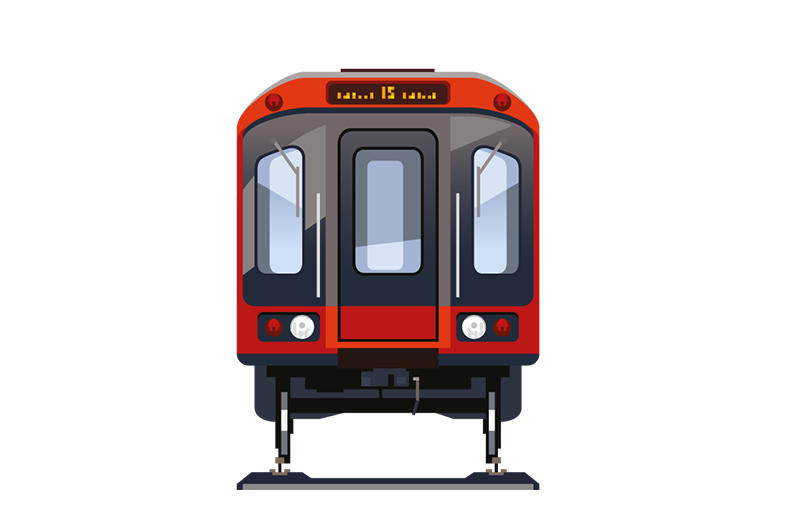Mind the gaps
Mark Caddle warns of the need for solid evidence. B 3 007 088, Transport for London v Charalampos Rosios, EUIPO, 8th May 2019.

B 3 007 088, Transport for London v Charalampos Rosios, EUIPO, 8th May 2019
The Applicant, Charalampos Rosios, applied to register the mark (shown right) as an EU trade mark (EUTM) in class 43 (“the Application”). Transport for London (TfL) opposed the Application on the basis of a likelihood of confusion with its EUTM registration in classes 30, 32, 33 and 43, pursuant to Article 8(1)(b) EUTMR.
TfL also relied on alleged unregistered rights in several other marks by virtue of extensive use in the UK for a variety of services, including those in class 43.
Comparison
In concluding the Applicant’s and Opponent’s marks are similar to a low degree from a visual perspective only, the Opposition Division (OD) noted that both consist of a circular device with a “horizontal bar through the central position, which crosses the rim of the circular device. In both cases, the depiction includes a word, the lettering of which runs the length of the central bar.” It also highlighted the difference in the backgrounds of the horizontal bar: dark for TfL and black on a white background for the Applicant. The similar figurative elements were deemed non-distinctive due to their rudimentary nature.
UNDERGROUND was held to be distinctive, but COFFEEBAR, notwithstanding the R in reverse at its end, would be understood by the relevant consumer for some of the services in class 43 and, thus, was not distinctive.
Evidence evaluation
Despite evidence submitted by TfL, it was decided that its earlier mark was to be treated as having normal levels of distinctiveness. In a damning critique of the evidence filed by TfL, the EUIPO noted that “pictures, history of the opponent, the allocation of licences and other legal relationships with third parties, the use of the mark at festivals that take place once a year, excerpts from catalogues, social and/or economic activities or those in the service sector only, do not allow a final assessment on the extent of use of the earlier mark”. The OD concluded that the evidence submitted indicated substantial use of TfL’s mark for “transport in metro”, at best.
As alluded to above, in assessing the evidence from TfL to substantiate the unregistered rights claim, the OD was not influenced by the evidence filed. The evidence was not able to show that TfL’s marks had acquired any goodwill in the UK.
In assessing the “holy trinity” for passing off cases (goodwill, misrepresentation, damage), the OD noted that submitting evidence in bulk and without clear demarcation as to which ground it supports will not be sufficient to satisfy the EUIPO that passing off has occurred.
The OD dismissed the opposition in its entirety.
Stricter climate
This case illustrates the consequences of not substantiating claims to passing off with evidence in the appropriate manner. Following the BIG MAC decision, the EUIPO has again demonstrated its strictness in assessing evidence filed by trade mark proprietors. The decision is also a reminder of the limited distinctiveness of basic figurative elements, especially where such marks do not enjoy enhanced levels of distinctiveness.
Key points
- Another reminder of the importance of abiding by EUIPO rules on evidence to fully support claims, especially those relying on unregistered rights
- TfL’s evidence was insufficient to establish a claim of passing off
Mark Caddle is a Chartered Trade Mark Attorney and Senior Associate at Withers & Rogers LLP


